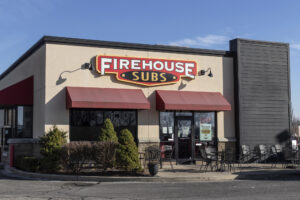
©FatCamera via Canva.com
Almost 33% of Retail Pharmacies Have Closed Since 2010: These 7 States Were Hit Hardest
December 4, 2024
Researchers from the UC Berkeley School of Public Health and the University of Southern California delivered some ominous news in a recent report: Nearly one-third of retail pharmacies in the United States have closed their doors since 2010.
As Berkeley Public Health noted, during the 2010s, more pharmacies opened for business than closed. However, beginning in 2018, that trend decisively began to turn. Between 2018 and 2021, the number of pharmacies declined in 41 states.
The study, published in the “Health Affairs” journal on Dec. 3, analyzed both local and market characteristics leading to pharmacy closures beginning in 2010 and ending in 2021. The authors of the piece promoted the notion that their research could help to provide a roadmap to understanding which markets may be most at risk of seeing their local pharmacies shut down — and for creating policy initiatives that could prevent such an outcome.
7 States Hit Hardest by Series of Closures Concerning Retail Pharmacies
As U.S. News & World Report indicated, seven states in particular were hardest hit by these closures in recent years: Illinois, Maine, Mississippi, New York, Pennsylvania, Rhode Island, and Vermont. These states saw a net decline in pharmacies in more than half of their respective counties.
The closures disproportionately impacted predominantly Black and Latino communities, as well. Pharmacy closure rates in predominantly Black (37.5%) and Latino (35.6%) neighborhoods were higher as compared to predominantly white (27.7%) ones.
Researchers explained that this finding could be somewhat explained by the fact that independent pharmacies — more commonplace in neighborhoods home to people of color and in low-income communities — had disproportionately struggled to stay open as opposed to their chain store counterparts.
First author Jenny Guadamuz, an assistant professor at the UC Berkeley School of Public Health, weighed in on the subject. “Our findings suggest that closures may widen health disparities in access to prescription and other essential pharmacy services, such as vaccinations and pharmacist-prescribed regimens, including contraceptives, medications for HIV prevention, and treatments for opioid use disorder,” Guadamuz said.
“Without safeguarding pharmacies in marginalized neighborhoods, expanding health care services at pharmacies may enhance convenience for more affluent populations while failing to address the health needs of communities disproportionately affected by pharmacy closures, particularly Black and Brown populations in low-income urban areas,” she added.
Preventing Further Pharmacy Deserts Could Be Possible
With one major driver of these closures being the merger of larger pharmacy chains with dominant pharmacy benefit managers (PBMs) — the latter of which “negotiate prescription drug benefits and steer patients to preferred pharmacies,” as Berkeley Public Health pointed out — the study authors suggested that political change via policymaking may be the only way forward.
One potential solution? Pressuring politicians to ensure that independent pharmacies be included in preferred benefit networks, instead of allowing larger chains and merged corporations to dictate the rules of the game — particularly concerning something as vital to public health as access to healthcare services.
“Federal, state, and local policies and programs should consider targeted strategies, including increases in Medicare Part D and Medicaid pharmacy reimbursement rates, to protect critical access pharmacies most at-risk for closure, particularly those serving neighborhoods that are or are at risk of becoming pharmacy deserts,” said senior author Dima Mazen Qato, associate professor at the USC Mann School of Pharmacy and Pharmaceutical Sciences.
Recent News








